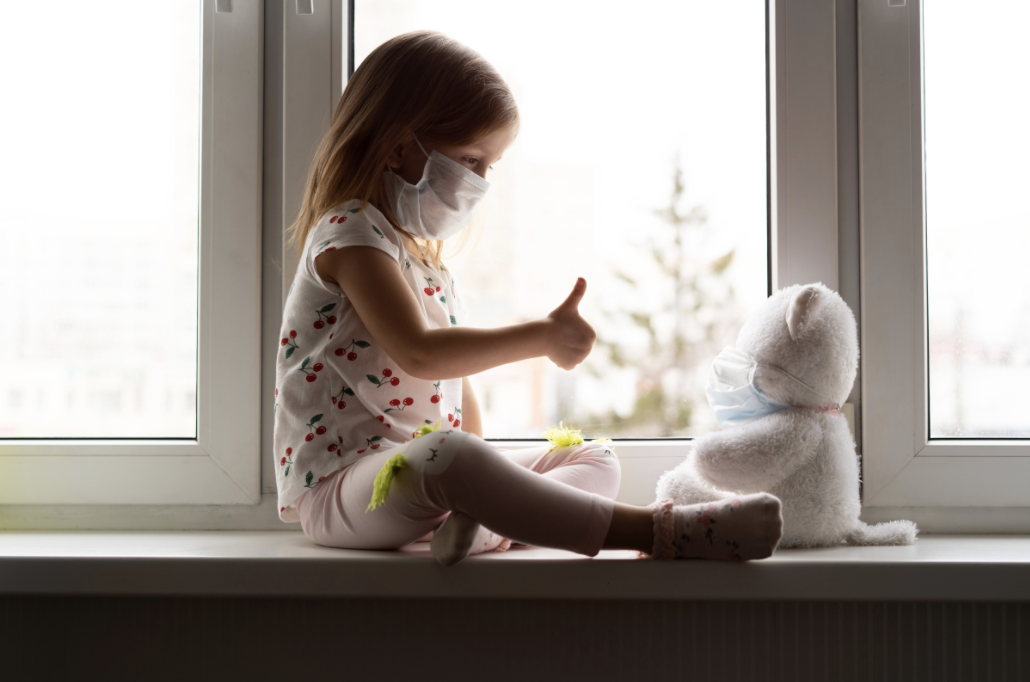By Brianna Matey, Vice President of Clinical Services
This week, Governor Wolf expanded the mask wearing order in Pennsylvania to make mask wearing mandatory whenever you leave home for everyone two and older. Wearing a mask can be a challenge. It’s not part of our normal routine, masks can feel uncomfortable, and sometimes we just don’t want to wear one– but we do, because we have the cognitive ability to understand the benefits of doing so. While we understand the reasons and the rule, many children, especially younger ones, may not be able to comprehend the reasons why we wear masks. Or, they may find a mask to be uncomfortable and just don’t want to wear one.
Today, we’re sharing some tools you can use to encourage children to wear masks and help integrate mask wearing into their daily routine. The tools below apply to all children, but we will also share some specific resources geared toward children who have autism or developmental delays. We’re going to start with motivation.
Building Motivation:
- Building motivation around mask wearing allows your child to feel in control, practice independence, and be more invested in the mask wearing experience. Try to find preferred colors/characters/patterns that your child likes. Etsy is a great resource for all different kinds of masks. If your child really loves trucks or dinosaurs or princesses, find a mask that features these favorites. When possible, include your child in picking out their mask. This helps build independence and motivation and can help their mask become something they feel fondly about and look forward to wearing, and less like something they are forced to do.
- Just like adults, children will have preferences about the type of mask that feels most comfortable. Some people like masks that tie behind the head, others prefer ones that go behind the ear, and others prefer bandana-style face covers. If possible, let your child try a couple different styles. You will then be able to see which ones are most comfortable and which ones stay on better.
- If you have the ability to have two masks for your child, allow them to make the choice of which one to wear when it’s time to go out. One day your child might be in a dinosaur mood and another day, more of a truck mood. They may even have a preference depending on what kind of activity you are doing! Letting your child decide builds autonomy, independence, and a sense of control–and builds their motivation to wear it.
Use Visuals:
- Social stories are great tools to help build an understanding of mask wearing. If you are looking for social stories, we suggest this one about mask wearing and this one about COVID-19. Start building in the social story as part of your daily routine. Read it as you would any other storybook. The goal is to let your child understand the hows and whys of masks and to allow space for you to answer questions as they come up. As your child becomes more familiar with the story, progress to having your child (and you!) wear a mask while you read. The goal is to make mask wearing more comfortable, more routine, and part of your daily habit. The social story offers a framework of comprehension and will support your child in making their mask part of their routine.
- For children who are preverbal, or who respond better to visual boards, it can be helpful to use a First-Then board. First-Then boards help children understand expectations and give a visual representation of the behavior. If you are using a First-Then board, start with the mask wearing in the “first” section, followed by a preferred task/activity in the “then” section. Make sure to use a clear, concise visual icon, perhaps a picture of someone wearing a mask or a picture of you or your child wearing a mask. Then, use an icon for whatever will happen next (preferably something the child really loves!).
Verbalize clear, concise directives.
- Whenever you have children engage in non-preferred activities (and mask wearing in the beginning is probably going to be non-preferred), make sure to use clear, concise directives. You don’t want to add too many steps or too much white noise in your instructions. For example, you could simply say, “First put on your mask, then we’re going to the store.” Or, “First put on your mask, then we’re going to play a video game.” The more clear and concise the better.
Practice and Praise!
- Start by practicing mask wearing in short intervals and give lots of positive praise throughout. For some kids, small intervals might be seconds, minutes, or 30 minutes. It’s okay if your child can’t manage a long duration at the beginning, that doesn’t mean you shouldn’t practice!
- Practice during preferred activities. This will help build the habit and make it more enjoyable for your child by having a distraction. When your child is doing something non-preferred, they will be more likely to focus on the mask. Whereas if they are engaged in a highly preferred activity, the child is going to more likely be distracted from their mask by what they are doing because they enjoy it! Choose something that is specific to your child that you know they enjoy: watching a show, going outside, playing with a specific toy, etc. First put on a mask, and then get to the fun part.
- Give praise early and often! Children are highly motivated by praise (for more about the power of play and praise, check out our blog here). So give lots of positive reinforcement and encouragement while your child practices wearing their mask.
Wearing a mask is a new skill; one that takes patience and practice to get used to. Building motivation and independence, using visuals, giving clear directives, practicing and praising can all help your child as they adjust to wearing a mask in the coming weeks. If you are looking for additional resources, we really like this article from Autism NJ. We are always here if you have specific questions about your child’s needs! Stay safe and well.
Have a question? Email Lrichmond@cgrc.org,
About the author: Brianna Matey is the Vice President for Clinical Services at Child Guidance Resource Centers. She has been with Child Guidance for over 10 years and oversees CGRC’s Delaware and Philadelphia county services. Brianna received her graduate degree in Counseling from Boston University and Doctorate degree from Philadelphia College of Osteopathic Medicine and she is a Licensed Clinical Psychologist and Licensed Professional Counselor. Brianna specializes in working with individuals to support their needs around emotional regulation, developmental delays, anxiety, depression, and coping skill development.

